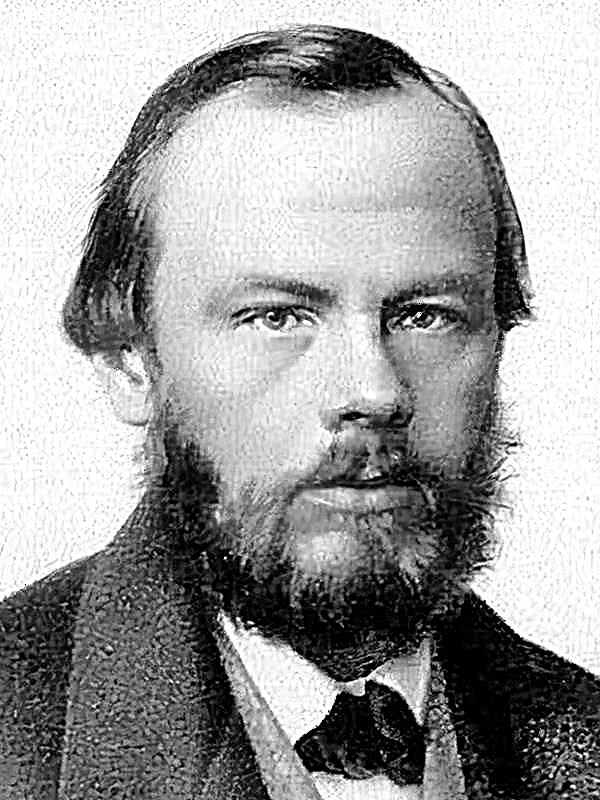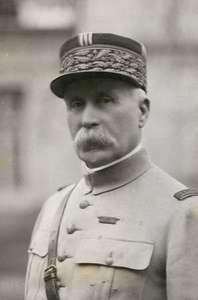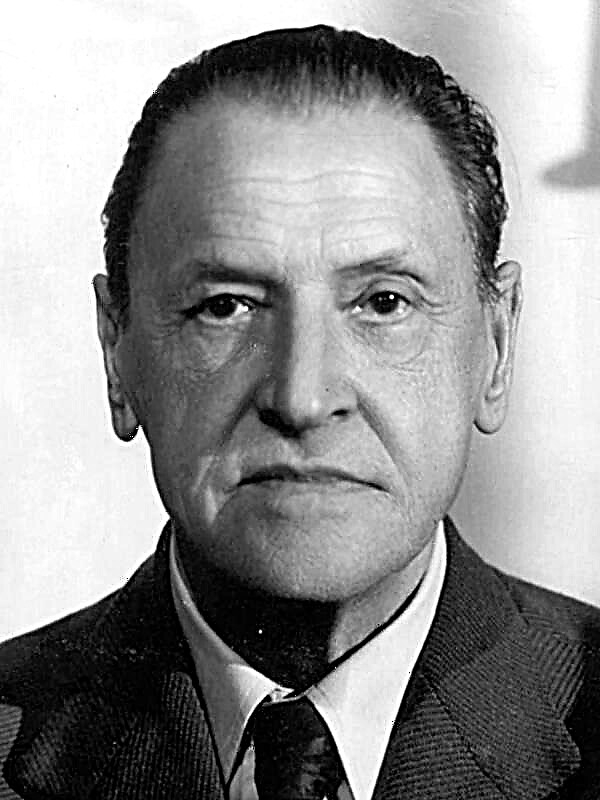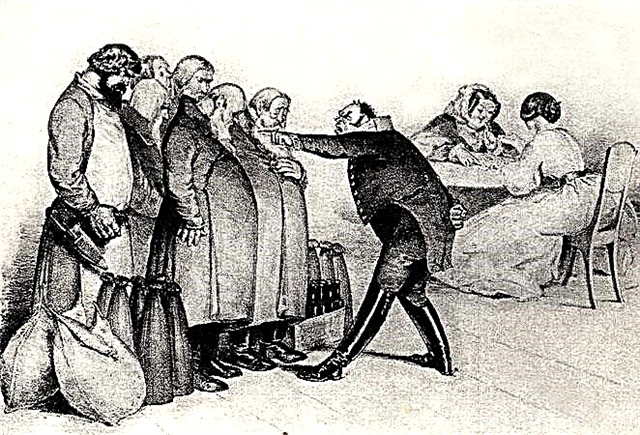: A dream is the “royal road” to the knowledge of the unconscious, a mysterious sphere of human spiritual life. There is always a sense in it, our desires are reflected. Psychoanalysis explains the nature of this riddle, revealing the mystery of sleep.
Scientific literature on the subject of dreams
The book begins with a review of significant theories about the nature of dreams accumulated before the writing of this monograph. Analyzing these theories, the author identifies the main ideas of knowledge about dreams:
A dream is a psychic phenomenon that can be explained. This will explain the causes of mental illness (neurosis, psychosis, hysteria).
A dream has the ability to turn a small irritation that occurred during sleep into a huge event.
A dream consists of our conscious and unconscious desires, which were in real life.
Dreams are often forgotten because they are not realized.
A dream contains memories from the past that at first glance are not important in the present.
Not a single impression from a person’s memory disappears without a trace.
The dream is influenced by both external (cold, sound, light) and internal stimuli (diseases of internal organs). Interpretation can help diagnose latent or incipient diseases.
The meaning of the dream eludes when explaining, when the consciousness tries to conjecture, to connect incomprehensible images and passages of sleep into something whole.
A dream speaks the language of images, not words and concepts.
A dream reveals our unknown nature, our true desires and traits, in which we are afraid to admit even to ourselves.
A dream represents an object not entirely, but partially, taking some of its property, features or contour.
All theories are divided into three groups, "regarding the degree of participation and the nature of mental activity in dreams":
- Recognizing that "all the mental activity of an awake state continues in a dream";
- Minimizing mental activity in a dream;
- Attributing to the "dreaming soul" a tendency to special mental activity, which it is practically not capable of when awake.
Dream Interpretation Method
For a successful interpretation of the dream, “mental preparation” of the client is necessary.
Two things are required of him: an increase in attention to his mental memories and the elimination of criticism, with the help of which he usually selects the thoughts that arise in his brain.
Do not look for the desired clarification of sleep. It is necessary to voice all your thoughts and feelings. It is not so easy to reject criticism of pop-up thoughts, as many of them are unpleasant, and a person is inclined to avoid traumatic memories.
To understand the dream, "one should not take the dream in its entirety, but only certain elements of its content." Different people may have dreams similar in content, but each of them will have its own meaning and desires.
Any dream makes sense and represents the fulfillment of desire. The author gives an example of his own dream, in which he sees his former patient Irma, who was undergoing treatment for hysterical fear. In a dream, she “looks painful and complains that she has a sore throat and stomach,” but the author tells her that she herself is to blame for her pains. On the eve of the dream, he met a friend who said that she felt better, but not so well. It seemed to the author that it was said with a certain rebuke, and he wrote an acquittal note to another doctor.This dream means a desire to justify and reassure oneself - the patient herself refused treatment and suffers through no fault of the analyst.
The dream freed me from responsibility for Irma's well-being ... its content is, therefore, the fulfillment of desire, its motive is desire.
Dream is the fulfillment of desire
The chapter proves the thesis that a dream is a fulfillment of a desire unsatisfied in reality. In a dream, desire seems fulfilled. A simple example is the thirst dream:
If I eat ... salty foods in the evening, then at night I have a thirst and I wake up. Before awakening, however, I see a dream constantly with the same content: I dream about what I drink.
The fulfillment of desire is also confirmed by dreams when a person is somewhere, although he sleeps peacefully in bed.
I often dreamed that I had already stood up and stood before the washbasin. After a few moments, I still began to realize that I was still lying in bed, but continued to sleep.
The author gives examples of deciphering several dreams confirming the truth of these provisions.
If a young woman dreamed that she had menstruation, then in reality she was not there. ... It was a convenient way to indicate the signs of her first pregnancy.
The dream of a woman who sees traces of milk on her clothes means a desire for pregnancy and the ability to feed her unborn baby.
Children's dreams clearly fulfill the wishes of the child, but adults can also see infantile dreams. For example, people on long winters constantly dream about a variety of foods, large stocks of tobacco, sweets and an approaching ship.
The distorting activity of a dream
In its content, a dream can be explicit and hidden. Explicit is what can be communicated after awakening. Hidden content can only be understood after interpretation.
Two psychic forces form a dream: the first is a desire experienced by a person, the second is censorship, which distorts this desire.
Where in social life can one find a similar distortion of a mental act? Only where there are two people, one of whom has a certain power, the other is forced to reckon with the latter.
This mechanism is reminiscent of political censorship: if a writer openly and directly expresses his criticism of the authorities, he will not be published and punished. But if the heroes of his book are animals or non-existent characters, then a thought will be expressed, and retribution will not come. Censorship changes desire, sometimes distorting it to the opposite: for example, hostility to someone in hidden content is hypocritically replaced by tenderness in explicit (conscious) content.
Many dreams are so hidden before interpretation that they seem to be not a fulfillment of desire. The author argues that this is not so.
The woman dreamed that she wanted to invite guests for dinner. But due to a number of circumstances (the store is closed, and the supplier cannot be reached), her intentions were not realized.
It turns out that a friend was expected to visit her, whom she was jealous of her husband. The guest wants to grow stout and the dreamer's husband likes the chubby ones. In a dream, the wish was fulfilled so that dinner would not take place - a friend did not come, did not replenish at the treats, and the dreamer was not jealous of her husband.
Another patient dreamed that her beloved nephew Karl had died. He sees him, a coffin, candles.
It turned out that the woman loved the man, but could not be with him. Before that, during the funeral of her other nephew, she saw this man at the tomb. The dream fulfilled the desire to meet with a loved one at a funeral.
The man dreamed that he was going to his house by the arm of a woman and, having arrived in a carriage, the policeman wanted to arrest him.
During the analysis, the man suggested that he could be arrested for infanticide.His secret connection with his mistress caused alarm that she became pregnant and they would be exposed. The dream fulfilled the desire: the child is killed, the child killer is arrested.
Everyone has unpleasant, forbidden desires in which he is not able to admit to either another or himself. They are rooted in the depths of the unconscious and do not reach consciousness in its original form, undergoing distortion by censorship.
Dreams in which fear is present have at the core of some unsatisfied sexual desire (libido).
Material and sources of dreams
Repression is the process of negating and rejecting desire, in which the object of desire changes, but the strength of the emotion is preserved. It is formed through the action of censorship, when the desire is asocial in nature (sex, murder, incest). The suppressed desires, as a rule, concern the Oedipus complex, according to which the child unconsciously seeks to possess the mother and eliminate the father and brothers. These childhood experiences never get rid of, being a powerful source of dreams.
Another mechanism is displacement, in which the thought, avoiding censorship, penetrates the consciousness. For example, a soldier defends a flag (a piece of matter), replacing the concept of homeland and duty.
Also in the dream there is also a function of condensation, when several experienced emotions, objects or events can be combined into one. In real life, there is no connection between these elements.
- Important emotional event
- An event or series of events represented in a dream by a neutral and indifferent scene.
- A strong unconscious desire with an important motive. It is replaced by indifferent material, in which the hidden content is disguised as an insignificant image or a trifling event.
Typical dreams are dreams that are common to all people:
- The dream of nudity: a man is stripped, he is ashamed, he is trying to leave, but he cannot, while feeling constrained. This desire is from childhood, when the child enjoys nudity. Stiffness suggests that the unconscious wants to enjoy nudity, and consciousness requires an end.
- The death of relatives when the dreamer does not experience grief, remaining indifferent. Another reaction - at the sight of the death of a loved one (living in reality), the sleeping person suffers. In fact, this is a disguised death wish for this relative. The wish for death may be masked by care.
- The dream of an unexamined exam in which a person is afraid to do something wrong and be punished for it. Such a dream dreams in anticipation of some kind of test, the success of which a person doubts.
- The dream of being late for the train, where departure symbolizes death.
- The dream of flying, hovering or falling. The child makes its first flights in childhood: it is thrown, rocked, circled on a swing, carousels. Along with fear, he experiences a pleasant dizziness (first sexual sensation). Dreams of takeoff are associated with an erection, and dreams of falling are an expression of fear.
The symbolism of dreams is associated with myths, traditions and archetypes. For example, the king and queen mean parents, and the heir to the throne (prince or princess) is the dreamer himself. Oblong or sharp objects - stick, cane, knife, tree, umbrella, nail file, women's hat, tie - represent male symbols. Boxes, cabinets, drawers, stoves, rooms, a wall with protrusions are female symbols. A table, bed (bed) symbolize marital family relations. Sexual relationships can be represented by climbing or descending stairs. A child in a dream (baby, baby) can represent the genitals, and crush the child - a symbol of sexual intercourse.
Dream job
If censorship does not allow desire into consciousness, the dream uses the process of condensation.For example, to portray the similarities of different people, a new unit of one person is created, in whose appearance there may be traits of people replaced by him. The most pronounced condensation is manifested in the formation of words and names, when as a result of combination, displacement, substitution comic and bizarre combinations of speech are born.
Displacement is the replacement of the colorless and abstract content of the thought underlying the dream with a more plastic and concrete expression. The shift and transfer of meaning from more important elements to less important is the distorting work of a dream. The main goal of distortion is to avoid censorship, to enable desire to penetrate consciousness.
Condensation and displacement are methods of the same repression, which avoids the use of a word with a direct meaning. At the same time, new, bizarre and incomprehensible words and sentences are formed. Such a formation occurs with neurosis, paranoia, hysteria, or obsessive manifestations.
The method of analyzing a dream is to consider the dream not entirely, but separately each of its elements. A dream contains only thoughts, not a connection between them. To connect several thoughts, a dream uses a form of simultaneity when all the material is presented as a single event.
To express conflicting relationships (“vice versa”), a dream uses the inversion of an element in the dream. A dream can also distort the time when the final event is placed at the end, and the reason is at the beginning of the dream.
Psychology of dreaming processes
The author divides the human psychic apparatus into two systems. The first is passive-perceptive in nature, at the pole of which diverse impressions are split. The second contains motor-volitional functions that combine these impressions into a holistic emotion. In other words, the psyche has two poles - sensory and motor. The mental process proceeds from the receiving end to the motor.
The author hypothesizes that a dream is the result of the conservation of energy of the body, which seeks to maintain a state of sleepy rest for longer, since sleep is an optimal state of equilibrium. Sleep is a complete closure of an organism on itself, exclusion of oneself from interaction with the external environment. But the body's system depends on the influence of external conditions (climatic, temperature, sound and visual stimuli). The influence of external factors takes the body out of a state of rest, creates tension, which it seeks to neutralize through dreaming. A dream transforms external impressions (bell, door slam, cold) into dream images, designed to soften real impressions with imaginary images.
The author calls the passive system Unconscious (Bsz), and the active - Preconscious (Psz). If the former produces various affects, the latter seeks to censor them. Affective and censoring systems perform various tasks, creating a mental conflict. The unconscious produces an irrational, aggressive activity that causes unpleasant emotions. The preconscious is focused on the censoring activity of the mind and seeks to compromise with the instincts of the unconscious.
The book concludes with the idea that the dream "carries us into the future, but this future, which seems to be a dreamer of the present, thanks to an indestructible desire, is a copy and reproduction of the past."




 Life as a startup
Life as a startup






